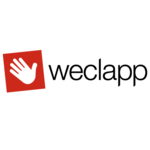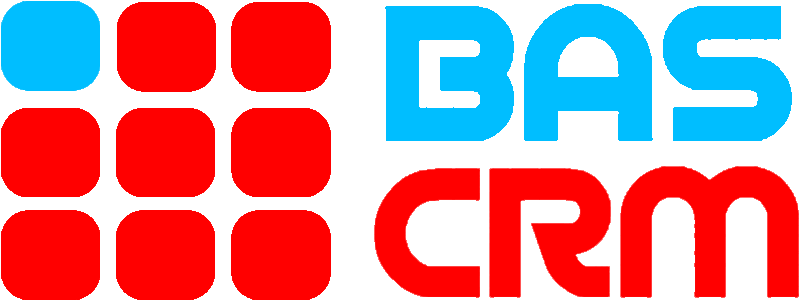Description

vtenext

Weclapp
Comprehensive Overview: vtenext vs Weclapp
As of my last update, I can provide a comparative overview based on the information available up to then. Please note that specifics may have evolved since.
vtenext
a) Primary Functions and Target Markets:
-
Primary Functions: vtenext is an open-source Customer Relationship Management (CRM) platform with a strong emphasis on business process management (BPM). It provides tools for automating workflows, managing customer relationships, sales, marketing, and customer service activities. The platform is extensible, allowing businesses to customize and integrate other third-party applications according to their needs.
-
Target Markets: vtenext primarily targets medium to large businesses that require customizable CRM solutions. It appeals to companies that wish to integrate CRM functionalities with a business process automation layer. Industries such as finance, retail, and professional services commonly employ vtenext.
b) Market Share and User Base:
- vtenext, being an open-source product, might have a wider footprint among companies looking for cost-effective solutions that allow direct control and customization. However, as a specialized software tool, it does not hold a massive share compared to mainstream CRM giants like Salesforce or Microsoft Dynamics. Its user base tends to be more niche, focusing on businesses that prioritize integration with business processes and customization.
c) Key Differentiating Factors:
- Open Source Nature: Allows complete customization and flexibility, crucial for businesses looking to tailor CRM software deeply connected with their unique processes.
- Integrated BPM Capabilities: The integration of BPM within the CRM helps businesses automate and streamline complex workflows directly within their CRM system.
- Flexibility and Cost: Being open-source, companies can manage costs better and adapt the platform to fit specific business needs without extensive licensing fees.
Weclapp
a) Primary Functions and Target Markets:
-
Primary Functions: Weclapp is a cloud-based Enterprise Resource Planning (ERP) and CRM software designed to handle resources, customer relationship management, inventory management, project management, and sales. It aims to streamline business processes by offering a unified platform for various business functionalities.
-
Target Markets: Weclapp primarily targets small to medium-sized enterprises (SMEs) that require comprehensive ERP capabilities alongside CRM functionalities. It caters to a variety of industries, including retail, manufacturing, and IT services.
b) Market Share and User Base:
- Compared to more established ERP vendors like SAP or Oracle, Weclapp holds a smaller market share. However, its user-friendly interface and cloud-based architecture make it appealing to SMEs looking for an integrated solution without the heaviness of enterprise-level ERP systems. It has a growing user base in the SME sector, especially among businesses that want to unify their CRM and ERP solutions seamlessly.
c) Key Differentiating Factors:
- Comprehensive Integration: Weclapp provides an all-in-one platform that integrates ERP and CRM functionalities, reducing the need for separate systems and minimizing data silos.
- Ease of Use and Implementation: Known for its intuitive user interface and simplified onboarding process, Weclapp is accessible for SMEs that may not have extensive IT resources.
- Cloud-Based Solution: Offers the flexibility, scalability, and lower upfront costs associated with cloud deployments, making it an attractive option for growing businesses.
Comparison and Conclusion
-
Common Appeal: Both vtenext and Weclapp offer modularity and integration, but they aim at different types of integration—vtenext with business process automation, and Weclapp with ERP functionalities.
-
Target Audience: vtenext is suitable for medium to large enterprises needing CRM with strong BPM, while Weclapp serves SMEs looking for a unified ERP/CRM platform.
-
Customization vs. Ease of Use: vtenext's open-source nature appeals to businesses needing extensive customization, whereas Weclapp’s cloud-based, user-friendly approach targets businesses prioritizing ease of use over deep customization.
In conclusion, choosing between them depends largely on the specific needs of the business regarding customization, scale, integration requirements, and budget considerations.
Contact Info

Year founded :
2011
Not Available
Not Available
Italy
http://www.linkedin.com/company/vte-crm

Year founded :
2008
+49 69 333901800
Not Available
Germany
http://www.linkedin.com/company/weclapp
Feature Similarity Breakdown: vtenext, Weclapp
To provide a feature similarity breakdown for vtenext and Weclapp, we need to consider both platforms’ core features, their user interfaces, and any unique features each offers. Let's delve into these aspects:
a) Core Features in Common
Both vtenext and Weclapp are CRM systems that aim to enhance business management and customer relationship processes. Their shared core features often include:
-
Contact and Lead Management: Both platforms provide comprehensive tools for managing contacts, leads, and customer information, helping businesses keep track of interactions and sales processes.
-
Sales and Pipeline Management: They offer sales pipeline management capabilities, which assist in tracking sales opportunities from lead to closing.
-
Task and Activity Management: Users can manage tasks, set reminders, and schedule activities to ensure efficient workflow management and productivity.
-
Email Integration: Integration with email clients to facilitate communication directly from the CRM.
-
Reporting and Analytics: Both platforms offer reporting tools to analyze sales performance, customer data, and other business metrics for informed decision-making.
-
Automation: Automation of tasks and workflows to improve efficiency and reduce manual labor in processes like follow-ups or lead assignments.
-
Integration Capabilities: Both offer integration with various other business tools and software, enhancing their functionality within an organization’s tech stack.
b) User Interface Comparison
While both platforms aim to provide user-friendly interfaces, their approaches and design philosophies might differ:
-
vtenext: Typically features a modular interface that allows for customization. It provides a flexible UI with widgets and dashboards that can be tailored to individual user preferences. vtenext often emphasizes versatility, allowing users to set up processes that align closely with their business needs.
-
Weclapp: Known for its clean and intuitive interface that is designed to streamline user experience. It often offers a modern look with a straightforward navigation system, making it easy for users to get up to speed quickly. Weclapp places an emphasis on ease of use, aiming to minimize the complexity involved in managing business processes.
c) Unique Features
While both systems are robust, they offer some unique features that may set them apart:
-
vtenext:
- Open Source Capability: One of the distinguishing features of vtenext is that it can be used as open-source. This allows businesses to completely tailor the system according to their needs and integrate additional functionalities as required by their unique business processes.
- BPM (Business Process Management): vtenext offers strong BPM capabilities, allowing businesses to design, execute, monitor, and optimize their processes directly within the software.
-
Weclapp:
- Multi-tenancy Platform: Weclapp supports multi-tenancy, making it particularly appealing for companies seeking to manage multiple brands or business units from a single platform.
- Integrated ERP Features: In addition to CRM, Weclapp includes ERP functionalities like inventory management and order processing, making it an all-in-one solution for businesses looking to manage their CRM and ERP in a single system.
In summary, while vtenext and Weclapp share several core CRM features, they differ in terms of unique offerings and user interface designs—vtenext leans toward customizability and process management, while Weclapp stands out for its ease of use and integrated ERP capabilities. These differences can be pivotal depending on organizational needs.
Features

Integration and Extensibility
Analytics and Reporting
Business Process Management (BPM)
Customer Relationship Management (CRM)
Marketing Automation
Customer Support
Sales Management
Workflow Automation
Integrated CRM & BPM
Customizable Workflow Automation
Omnichannel Communication
Data-Driven Insights
User-Friendly Interface

Accounting and Billing
Inventory Management
Customer Relationship Management
Project Management
Best Fit Use Cases: vtenext, Weclapp
To evaluate the best fit use cases for vtenext and Weclapp, it is essential to understand their distinct features, strengths, and the business needs they address.
vtenext
a) Best Fit for vtenext:
- Types of Businesses or Projects:
- Small to Medium Enterprises (SMEs): vtenext is suitable for SMEs that require a customizable Customer Relationship Management (CRM) system with integrated Business Process Management (BPM) capabilities.
- Businesses Looking for BPM Integration: Companies that need to streamline and automate their business processes alongside CRM functionalities can benefit from vtenext's BPM engine, which helps in designing and managing workflows.
- Industries with Complex CRM Needs: Industries that require personalized customer interaction and processes, such as finance, healthcare, and manufacturing, can use vtenext to tailor solutions particular to their operational complexities.
d) Industry Vertical and Company Size:
- Industry Vertical: vtenext caters well to sectors like service industries, retail, and manufacturing, where customer interaction and process management are critical.
- Company Size: It primarily targets small to mid-sized companies that desire a flexible and affordable solution to manage customer relationships and business processes.
Weclapp
b) Best Fit for Weclapp:
- Types of Businesses or Projects:
- Growing Businesses or Startups: Weclapp is ideal for rapidly growing businesses and startups that require a scalable Enterprise Resource Planning (ERP) and CRM solution without the need for substantial upfront investments.
- Companies Needing Integrated ERP/CRM: Organizations seeking a blend of ERP and CRM functionalities will find Weclapp to be an efficient option as it integrates inventory, order management, and accounting with customer relationship management.
- Tech-Savvy Businesses: Companies that prefer cloud-based solutions with strong support for modern integrations and flexibility will align well with Weclapp’s capabilities.
d) Industry Vertical and Company Size:
- Industry Vertical: Weclapp is particularly suited to industries like retail, e-commerce, and services that need integrated systems to manage internal resources and customer relationships.
- Company Size: Small to medium-sized enterprises (SMEs) that require comprehensive ERP/CRM solutions with the flexibility to adapt as they grow benefit from Weclapp’s offerings.
Conclusion
Both vtenext and Weclapp cater to SMEs but are tailored to different priorities. vtenext shines in scenarios where BPM is critical alongside CRM, making it a better fit for industries with complex workflows. On the other hand, Weclapp excels in offering integrated ERP and CRM solutions, making it suitable for industries focused on comprehensive resource and relationship management. The choice between the two often depends on whether the primary need is for BPM-enhanced CRM functionalities or a combined ERP/CRM system.
Pricing

Pricing Not Available

Pricing Not Available
Metrics History
Metrics History
Comparing teamSize across companies
Conclusion & Final Verdict: vtenext vs Weclapp
When evaluating vtenext and Weclapp to determine which offers the best overall value, it's essential to consider several factors, including pricing, features, customization options, integration capabilities, user interface, and support services. Here's a breakdown and conclusion on these software solutions:
a) Best Overall Value
Weclapp tends to offer the best overall value, primarily due to its comprehensive feature set that appeals to a wide range of business types, scalability, and more polished user interface. It is often praised for its ease of use and robust integrations.
b) Pros and Cons
vtenext:
- Pros:
- Customization: vtenext is highly customizable, allowing businesses to tailor the CRM to fit specific processes and workflows.
- Open Source Options: Offers open-source solutions, which can be attractive for businesses needing extensive customization and wanting to maintain closer control over data.
- Process Management: Strong capabilities in process and workflow management, making it ideal for businesses that prioritize this aspect.
- Cons:
- Complexity: The customization capabilities may lead to complexity, requiring more technical expertise to set up and maintain, which could be a disadvantage for smaller teams.
- User Interface: Less polished compared to other market options, which might impact user adoption.
Weclapp:
- Pros:
- Comprehensive Functionality: Includes a wide range of features for ERP and CRM, making it suitable for different business areas and sizes.
- User-Friendly Interface: Known for its intuitive and clean user interface that enhances user experience.
- Scalability: Suitable for growing businesses due to its cloud-based nature and scalability.
- Cons:
- Pricing Structure: Can be more expensive, especially as additional modules or users are added, which could be a drawback for start-ups or smaller enterprises.
- Customization: While feature-rich, customization options may not be as deep as those offered by open-source competitors like vtenext.
c) Recommendations for Users
-
Determine Your Focus: If your business requires high levels of customization and complex process management, vtenext might be a better fit due to its flexible architecture and open-source options. However, this would require a team comfortable with managing more complex setups.
-
Look for Ease of Use: For businesses looking for an out-of-the-box solution that is easy to use and can scale quickly, Weclapp could be more advantageous. It's particularly suitable for companies that want a hosted solution with strong support and frequent updates.
-
Budget Considerations: Smaller companies with tight budgets and technical resources may find vtenext's open-source offerings appealing. On the other hand, businesses willing to invest more for a comprehensive, user-friendly solution with ERP capabilities might lean towards Weclapp.
In summary, the best choice between vtenext and Weclapp depends largely on the specific needs and context of the business considering them. Weclapp generally provides strong overall value for those prioritizing ease of use, comprehensive functionality, and scalability, while vtenext is suitable for those needing extensive customization and control over their system.
Add to compare
Add similar companies




